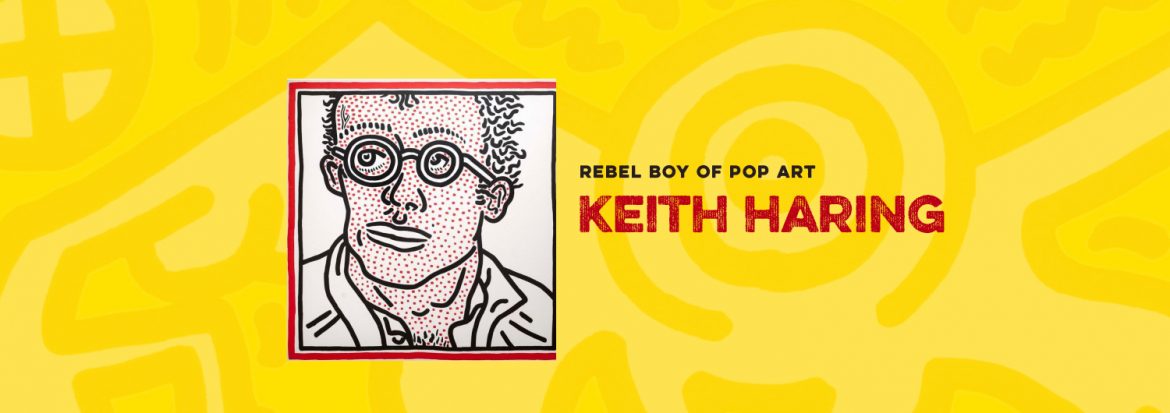Artist Keith Haring (May 4, 1958 – February 16, 1990) was an artist and social activist whose work responded to the street culture in New York during the 1980s.
Keith Haring’s art work was bold and graphical and has become a widely recognized visual language of the 20th century. His art made a statement and he became a sensation in the art world with his bold, cartoon style and graffiti influenced works. He created the art form of classic graffiti and brought recognition to street art. However his art was so much more than graffiti. He used his own work to highlight issues in New York and his own life. It was bold, vivid and expressive with roots in cartooning and graphic design. It’s not wonder though since his dad was a cartoonist, he inherited his unique style and talent.
Keith Grew up in Kutztown, Pennsylvania and spent many hours drawing with his father. Haring was fascinated by the popular cartoon art of Walt Disney and Charles Schultz. Haring was interested in art from an early age. From 1976 to 1978 he studied commercial art at The Ivy School of Professional Art, an art school in Pittsburgh. He soon lost interest in commercial art and moved on to study Fine Arts.
At age 19, in 1978, Haring moved to New York City, where he was inspired by graffiti art, and studied at the School of Visual Arts.
As Keith found his style and developed it, his artwork visually fought against mass consumption, racism, capitalism, violence, religion and injustice in all their forms, with a particular emphasis on the threat of nuclear war, the destruction of the environment, homophobia and the AIDS epidemic. His art expressed wherever he showed up.
While he never founded a school or an artistic movement, the curator of the current exhibit, Odile Burluraux, likens Haring to Andy Warhol, “the Pope of pop art”, who remained a friend and mentor.
Keith Haring is quoted as saying:
“I don’t think art is propaganda; it should be something that liberates the soul, provokes the imagination and encourages people to go further. It celebrates humanity instead of manipulating it.”
To quote David Hockney, Haring’s art existed “anywhere he stopped moving.” If Keith Haring were alive today, perhaps he’d tell us to stop, just for a moment.
Keith Haring died on February 16, 1990 at 31-years-old, of AIDS-related complications. His works continues to be exhibited around the world and many are owned by such prestigious museums as the Art Institute of Chicago, the Museum of Modern Art in New York City, and the Centre Georges Pompidou in Paris.
A vast commercial industry has been built around the visual aesthetic of Keith Haring. T-shirts, sneakers, jewelry, and greeting cards draw on the style of the “graffiti school” for their designs. Haring himself capitalized on his own image in a way painters never would have dreamed of before the mass media age.
“My contribution to the world is my ability to draw. I will draw as much as I can for as many people as I can for as long as I can.”
Keith Haring
And one of the most intuitive quotes:
“When I die there is nobody to take my place.”
Keith Haring
Sources: http://en.wikipedia.org/wiki/Keith_Haring
http://www.haring.com/
Featured image:
L: Keith Haring (1958–1990), Untitled (Self-Portrait),1985. Acrylic on canvas. Private collection. Keith Haring artwork © Keith Haring Foundation. R: Keith Haring, self-portrait, 1980-1981. One of four Polaroids. Collection of the Keith Haring Foundation.
Other sources:
http://deyoung.famsf.org/haring/about/biography













